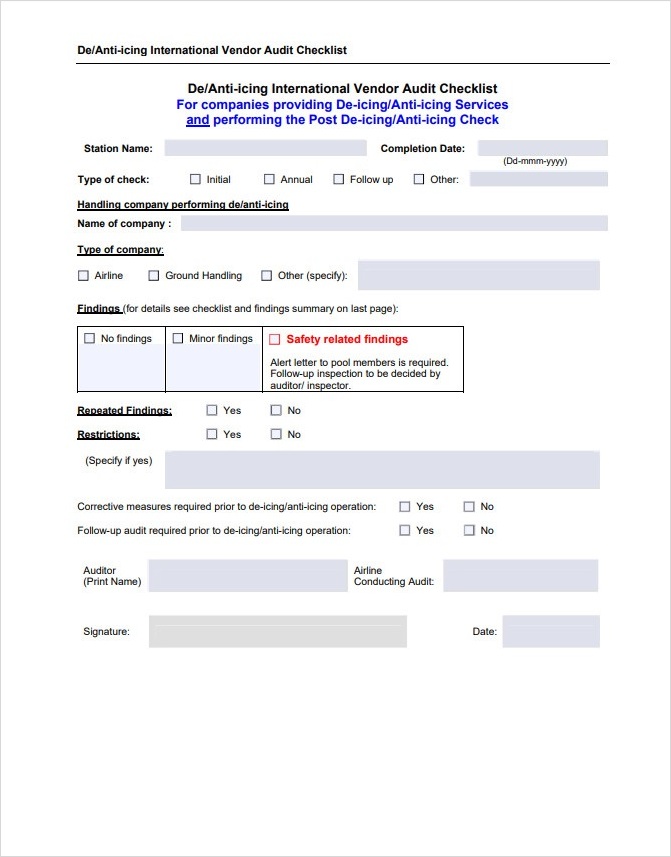In today’s business landscape, companies often rely on vendors to provide goods and services that are essential for their operations. However, choosing the right vendor can be a challenging task, as it requires careful evaluation and consideration of various factors. To ensure that a vendor meets a company’s standards and requirements, conducting a vendor audit is crucial.
This article will guide you through the process of using a vendor audit checklist to evaluate vendors effectively.
What is a vendor audit checklist?
A vendor audit checklist is a comprehensive document that outlines the criteria and requirements a vendor must meet to be considered suitable for a company’s needs.
It serves as a systematic tool to evaluate vendors and assess their capabilities, quality standards, performance, and compliance with legal and regulatory obligations.

Why is a vendor audit checklist important?
Conducting a vendor audit is essential for several reasons:
- Quality assurance: By using a vendor audit checklist, companies can ensure that vendors meet their quality standards and deliver products or services that meet or exceed expectations.
- Risk mitigation: Vendors may introduce risks to a company’s operations, such as legal, financial, or reputational risks. A vendor audit helps identify and mitigate these risks by evaluating a vendor’s compliance with regulations, financial stability, and reputation.
- Cost optimization: A vendor audit allows companies to assess a vendor’s pricing structure and identify opportunities for cost savings or negotiation.
- Performance evaluation: Regular vendor audits help track a vendor’s performance over time, ensuring they continue to meet the company’s expectations and maintain a high level of service.
- Compliance: Many industries have specific regulations and standards that vendors must comply with. A vendor audit checklist ensures that vendors adhere to these requirements, reducing the company’s legal and compliance risks.
How to create a vendor audit checklist
Creating a vendor audit checklist involves several steps:
- Identify your company’s requirements: Before creating a vendor audit checklist, it’s essential to determine what your company needs from vendors. This includes factors such as product quality, pricing, reliability, compliance, and customer service.
- Research industry standards: Familiarize yourself with industry best practices and standards to ensure that your vendor audit checklist includes relevant criteria. This may involve consulting industry associations, and regulatory bodies, or benchmarking against competitors.
- Define evaluation criteria: Based on your company’s requirements and industry standards, outline the specific criteria that vendors will be evaluated against. This may include factors such as financial stability, experience, certifications, quality control processes, and customer references.
- Create a scoring system: Develop a scoring system to objectively evaluate vendors’ performance against each criterion. This can be a numerical scale or a rating system, depending on your company’s preferences.
- Design the checklist: Use a template or software to design the vendor audit checklist. Organize the checklist logically and intuitively, grouping related criteria.
- Test and refine: Before implementing the vendor audit checklist, test it with a sample vendor to ensure it is comprehensive, user-friendly, and effective. Refine the checklist based on feedback and lessons learned.
Examples











Tips for a Successful Vendor Audit
Here are some tips to ensure a successful vendor audit:
- Prepare in advance: Gather all necessary documents and information before conducting the audit to ensure a smooth and efficient process.
- Be thorough: Pay attention to detail and thoroughly evaluate each criterion to obtain an accurate assessment of the vendor’s capabilities.
- Communicate expectations: Communicate your company’s expectations to the vendor before the audit to ensure they understand the evaluation criteria and can provide the necessary information.
- Document findings: Keep detailed records of the audit findings, including strengths, weaknesses, and areas for improvement. This documentation will be valuable when making vendor selection decisions.
- Follow up: Regularly review and reassess vendors to ensure they continue to meet your company’s standards and requirements. Conducting periodic audits will help maintain a strong vendor relationship.
Conclusion
A vendor audit checklist is a powerful tool that enables companies to evaluate vendors effectively and ensure they meet their standards and requirements. By following the steps outlined in this article and using a well-designed checklist, companies can optimize vendor selection, reduce risks, and maintain strong vendor relationships.
Remember to adapt the checklist to your company’s specific needs and regularly update it to reflect evolving industry standards and requirements.
Vendor Audit Checklist Template – Download